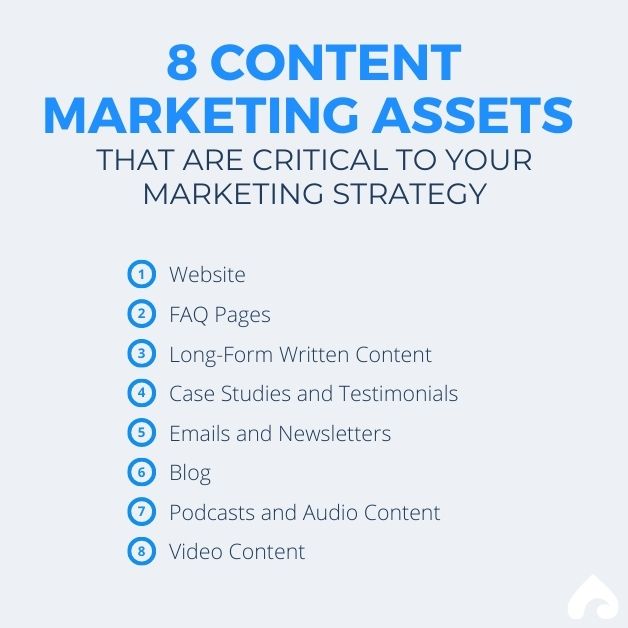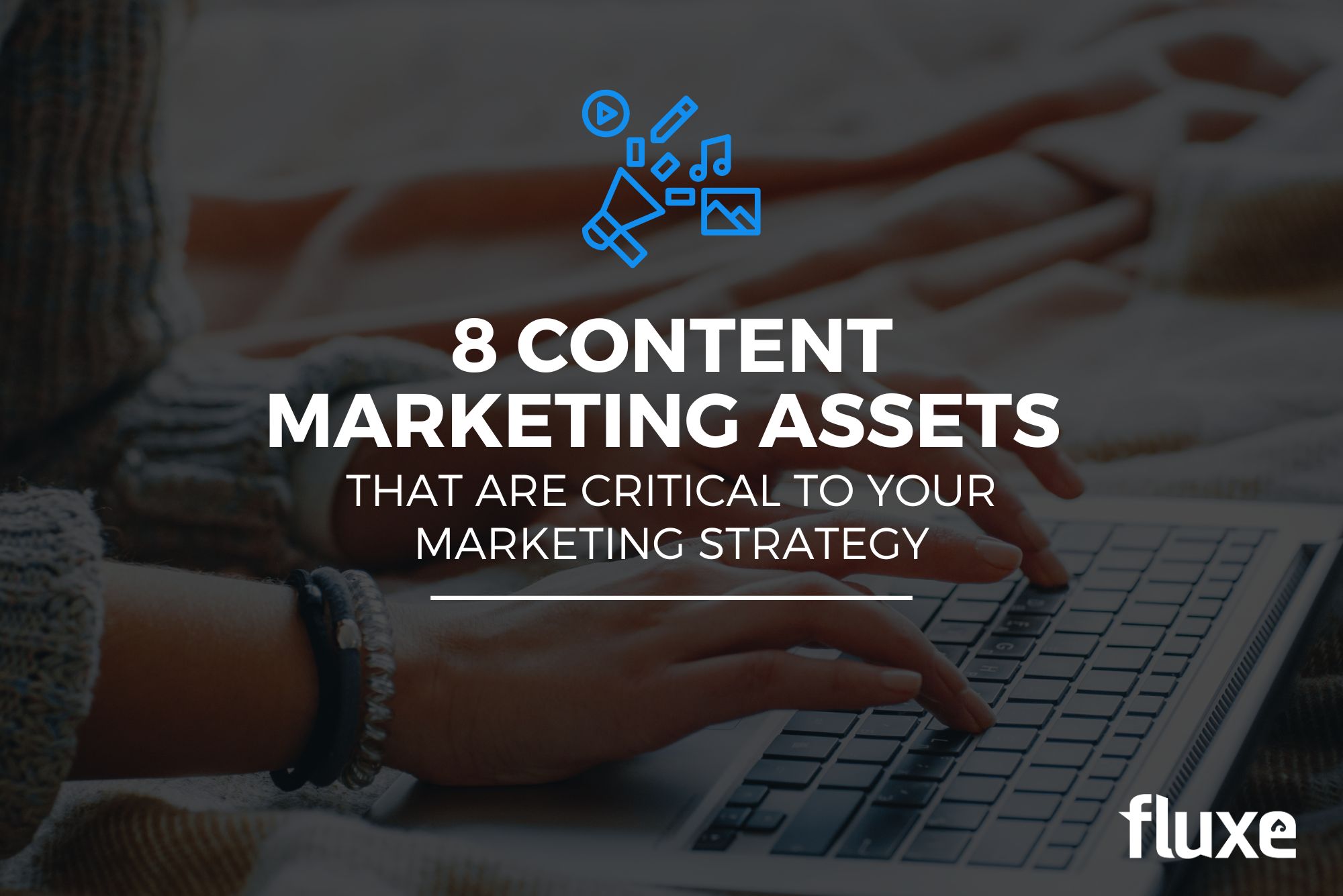A content marketing asset is a piece of content that can fuel marketing initiatives for your business.
Content assets come in many forms, and the right ones for your business have unlimited potential to attract buyers and boost client retention. Maybe you’re already using a few — but are you using them the right way?
Today, I’ll detail eight of the most critical content marketing assets and how to best use them to support your marketing strategy. That’s not to say every content marketing asset is worth creating. First, let’s talk about how to determine whether a content asset is right for your team.
How to Know Which Content Assets Are Worth Creating
When you’re marketing your business, everything you do will cost either time or money. When considering a new content asset, ask these four questions to make sure you’re using those resources most valuably:
- What’s the goal of the content asset? When it’s working, what will it accomplish? Answer in terms of what the asset will achieve along the buyer journey. Acquisition? Activation? Monetization? Retention?
- Is this type of content asset best for us? Consider your team’s strengths and limitations. What can you as a group feasibly do?
- How can we use the content asset to one-up the competition? In the buyer’s eyes, how will this asset set you apart from your competitors?
- How many times will we use/reuse the content asset? To get the most bang for your buck, make sure every asset you create can be used time and time again.
There are several types of content assets out there that yield poor answers to these questions. I’ve used some of them myself and wasted valuable resources. But I’ve also used some great content assets that have been critical to the success of my and my clients’ marketing efforts.
Below are eight of my favorite tried-and-true content marketing assets. If they yield productive answers to the above four questions, they can be great assets for your marketing strategy.
8 Content Marketing Assets That Are Critical to Your Marketing Strategy
1. Website
You probably already have a website; it’s the virtual face of your business. But are you using it to its greatest potential? Your website should be your home base where most of the other content marketing assets in this list are presented, directing readers to your products and/or services.
Using the right keywords and images on your site can dramatically boost your visibility and attract interested buyers. If you’re just starting out and don’t quite have the budget to hire a web designer, sites like WordPress and Wix are user-friendly and make it easy to get started.
2. FAQ Pages
Once you’ve created your ideal website, beef it up with useful content. If you’re in a buyer-facing role, you probably find yourself answering the same questions over and over. Creating a page of answers to your most frequently asked questions (FAQ) will make the buyer experience much more time-efficient — and it only takes a few minutes to add to your website.
3. Long-Form Written Content
Creating different types of content assets is critical to reaching different kinds of buyers. Some want to read about your expertise and mission through e-books; others prefer whitepapers or lead magnets.
4. Case Studies and Testimonials
Have buyers left some raving reviews for your business you wish you could print out and frame? Use those buyer testimonials to show interested clients that your product or service really works.
Case studies and testimonials are concrete evidence from third parties that what you offer is worth the cost, and they aren’t time- or labor-intensive to add to your website.
5. Emails and Newsletters
An unfortunate reality is that your buyers may not have time to regularly check your website for new long-form pieces or other content assets. A free, subscription-based email newsletter is a great way to keep your best clients in the loop and consuming the content you create for them.
6. Blog
Struggling to create long-form written content assets? A regularly updated blog is a great way to start developing long-form written content. A blog can educate your existing buyers on what you know best while attracting new customers by establishing your expertise and drawing search engine traffic.
Hiring a freelance blog writer is a great way to make sure your thoughts are put to “paper” in the most buyer-friendly way possible. You can start slow, either monthly or biweekly, and decide from there whether to transition to a weekly model.
7. Podcasts and Audio Content
For businesses struggling to find consistent readers of long-form content, a podcast could be a great alternative.
Not everyone prefers to read, and your buyers are busy individuals. Everyone is constantly playing tug-of-war with their attention, and some may not have time to read even the most concise, well-crafted blog post. Audio content is a great alternative to long-form written content, and buyers don’t have to set aside time to consume it. They can listen while driving, cooking, working out, etc.
Investing in quality recording equipment (microphones, filters, etc.) may put a dent in your budget, but it doesn’t have to be outrageous.
8. Video Content
Video content is a great way to support your brand visibility. From commercials to social media, video content visibility is seemingly endless, and there’s no telling how many interested buyers you can attract.
Most businesses don’t want a commercial that looks homemade, so investing in an A/V and video editing team to get professional promo videos makes sense. For social media marketing, especially on short-form content sites like TikTok, you’ll need a different set of resources: a new-generation smartphone and a sharp understanding of online trends.

Match Your Content Assets to Your Target Market
Businesses with large marketing budgets may be excited to create as many content assets as possible, but doing proper research beforehand is key to the success of your overall marketing strategy.
Consider your clients and buyers: What types of content do they usually engage with and share? An older client base that doesn’t use social media won’t respond to a TikTok campaign, and an on-the-go client base that doesn’t have the time to read long-form content won’t curl up with an e-book.
Ensure your bottom line benefits from your marketing efforts by focusing on the types of content assets that will actually reach your target buyers.
Organize Your Content Marketing Assets
Once you’ve created the best content marketing assets for you, it’s easy to lose track of them. To avoid asking yourself, Now where did I upload that video?, you’ll need somewhere to internally organize your content assets for easy reference.
A central content bank or library is an easy way to keep track of your marketing collateral. Organize it in whatever way is most efficient for you and your team: by content type, category, etc.
Repurpose Your Content Marketing Assets
You’re spending a lot of time, money, and hard work creating content assets. Why not milk them for all they’re worth?
As I’ve discussed before, you don’t have to let content marketing collateral collect dust in an old folder just because you’ve already used it once. It can take on new life time and time again.
For instance, if you’ve taken the time to create a unique presentation for a specific group of people, you might have gotten an okay ROI on it the first time around. But if you never do anything else with it, that’s as good as it gets. Instead, try repurposing that content asset for reuse to increase the value you get from your investment.
Reimagining your content assets can help you reach a wider audience of potential buyers, as well as help your team stick to your marketing budget.
Interested in developing content marketing assets but unsure where to start? Let’s have a conversation.



